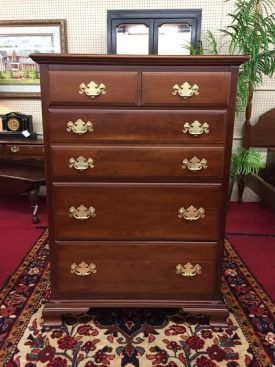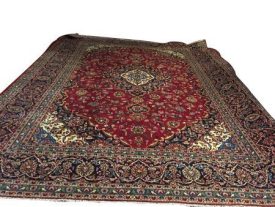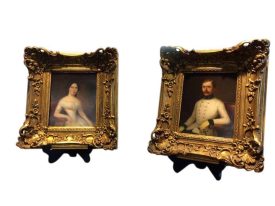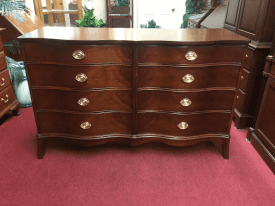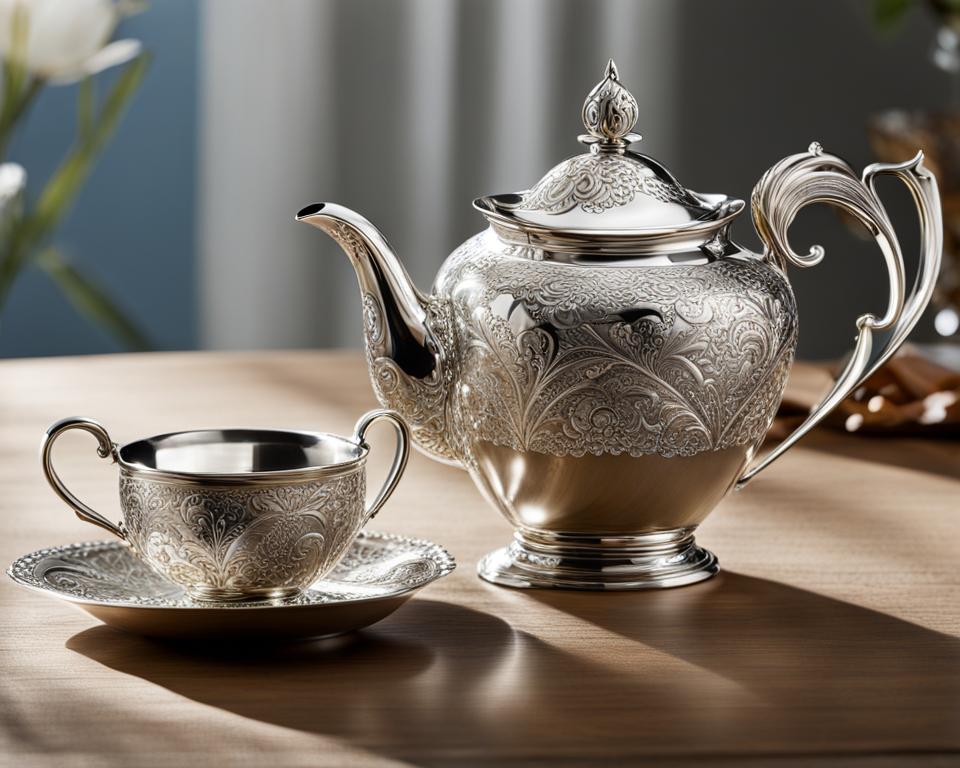When it comes to color schemes in home decorating, the craft extends far beyond painting a single room, tackling the herculean task of selecting an interior design color scheme that spans an entire dwelling. It’s not merely a matter of coordinating paints and fabrics – it’s about creating a symphony of color that sings across different spaces without hitting a discordant note. Artful usage of trendy home color palettes can turn a disjointed house into a harmonious home where transitions flow effortlessly from the bright hues of a lively dining area to the tranquil shades of a serene bedroom.
The secret to mastering home decor color palettes lies in the premise that every corner of living space, when viewed collectively, should form a picture of visual elegance and unity. It’s in the power of premeditation and the delicate balance of shades that ensures a visual consistency – where the eye roams freely from room to room without confronting abrupt changes in tone or style.
Join us as we unveil the art of cultivating a cohesive color environment that not only embraces individuality but also paints a story of stylistic fluency within the home.
Key Takeaways
- A well-thought-out color scheme can enhance the visual flow and unity throughout a home.
- When selecting colors, consider how they work in harmony, not just within a single space but throughout the entire house.
- The latest trends in color palettes can inspire homeowners to create both bold and serene atmospheres.
- Careful choice of a dominant hue sets the stage for a cohesive and personalized home decor color palette.
- From loud and vivid living rooms to serene and minimalist retreats, color schemes can dictate the ambiance of any space.
Understanding the Color Wheel in Home Decor
Embarking on the journey of choosing colors for home decoration can be likened to an artist contemplating a blank canvas. The color wheel, a vital tool in the artist’s toolkit, provides invaluable guidance for those seeking to create a cohesive color scheme. Grasping the color wheel’s utility in color combinations for home interiors equips decorators with the knowledge to blend hues harmoniously, much like a maestro orchestrates a symphony. The creative process unveils a spectrum of possibilities where colors converse and complement, laying the groundwork for a home brimming with visual harmony.
Complementary Versus Analogous Colors
Identifying your home’s leading color, the maestro of your palette, provides a basis from which to explore an array of related colors. The adjacent hues on the wheel, known as analogous colors, contribute depth and subtlety to the narrative you wish to weave through your decor. On the flip side, colors sitting opposite on the wheel, termed complementary colors, introduce a high-contrast drama capable of enlivening any space. Through judicious use of these relationships, you can craft a setting that is not only visually appealing but also emotionally resonant.
Monochromatic Palettes: A Minimalist Approach
For those who find beauty in simplicity, a monochromatic palette may be the key to creating a peaceful and minimalist aesthetic. This careful selection of varying shades, tints, and tones of a single hue can establish an understated and chic atmosphere. The monochromatic strategy is both sophisticated and soothing, making it an ideal choice for spaces meant to serve as a sanctuary from the vibrancy of day-to-day life.
Incorporating such color palettes elevates the art of home decor, transforming spaces into expressions of personal style and ambient storytelling. It’s an approach that not only enhances aesthetics but also fosters a deeper connection between inhabitants and their cherished spaces.
The Impact of Color Psychology in Decorating
The subtleties of color psychology in decorating breathe life into the walls of our homes, influencing moods and crafting atmospheres with an almost imperceptible power. It is the whisper of cool blues that calms the mind, the cheer of sunny yellows that uplifts, and the passion of fiery reds that energizes spaces. By intuitively reverse-engineering from the desired emotional pulse of a room, decorators and homeowners alike can curate color palettes that resonate deeply with the intended mood of each environment.
Imagine entering a space that envelops you in a tranquil cocoon of soft blues and gentle greens. Or perhaps a room that exudes bold confidence with vibrant oranges and statement-making purples. These are not just aesthetic choices; they’re psychological ones, with each color selected to evoke a specific response. Whether the aim is to introduce serenity with a neutral palette, or to splash out in spirited hues for an eclectic feel, the careful application of color can craft a space that’s not only visually appealing but emotionally attuned.
The adept use of color extends beyond mere preference. It becomes a language through which we communicate the essence of our abode. In selecting the colors that will define our home’s palette, we’re engaging in an act of emotional architecture, building spaces that reflect and shape our daily experiences. The clever incorporation of color does more than beautify—it transforms our living spaces into a gallery of emotions, where every corner speaks to our innate desire for balance, harmony, and well-being.
- Color psychology informs our choices, urging us to consider the emotional weight of each hue.
- Strategic color placement can enhance or subdue the intensity of interactions within a room.
- The right color combination can transform a room from simply a space into a sanctuary for respite or creativity.
In the grand tapestry of home design, the knowledge of color psychology serves as a guide, allowing us to weave together threads of color to create a holistic and resonant experience. The emotional resonance of a room can be deliberately shaped by the hues adorning its surfaces, making color psychology not just an element of design, but the very heart of a considered and conscious decorating practice.
Articulating Your Home’s Emotional Atmosphere with Colors
When we think of popular room color schemes, it’s not just about aesthetics—colors serve as a conduit for the emotional undertones within our homes. Each shade has the inherent capacity to conjure a distinct feeling, shaping our daily experiences as we move from room to room. By delving into the psychological implications of our favorite hues, we enable ourselves to craft spaces that echo our desired emotional states. Whether aiming for an abode that exudes tranquility or a dwelling that energizes the spirit, the deliberate application of color orchestrates the ambiance of our surroundings.
In the quest to define the emotional narrative of a home, one might consider an organic palette to introduce a soothing and grounded atmosphere. This could translate into gentle earth tones and soft textures that mimic the serene embrace of nature. In contrast, vibrant palettes bursting with energy suggest a dynamic and playful environment, encouraging creativity and excitement within its confines.
The interplay of colors in our homes is a dynamic dialogue between space and psyche. To achieve harmony, one must listen to the quiet whisper of each color—understanding its influence and weaving it into the tapestry of the home’s design with intentionality and foresight. Here’s a simple visual representation to guide you through crafting your home’s unique emotional atmosphere:
| Emotional Goal | Color Palette | Room Example | Mood Induced |
|---|---|---|---|
| Calming Retreat | Soft Blues, Creamy Whites | Master Bedroom | Serenity and Rest |
| Energetic Hub | Bright Yellows, Bold Reds | Family Room | Cheerful Activity |
| Creative Oasis | Inspiring Purples, Fresh Greens | Home Office | Inspiration and Growth |
| Cozy Gathering | Warm Oranges, Earthy Browns | Dining Area | Welcoming Warmth |
Embrace the hues that resonate with your personal narrative and let them paint a portrait of your ideal emotional habitat. Consider not merely the individual beauty of each color but also the symphony they create when combined. Whether through a carefully curated blend of analogous tones or a striking array of complementary colors, the schemes you choose will articulate the emotional essence of your home with unspoken eloquence.
Color Schemes in Home Decorating: Selecting Your Dominant Hue
Embarking on the journey of choosing colors for home decoration, the cornerstone of any cohesive design plan is the selection of a dominant hue. This foundational element sets the tone for the rest of the home, anchoring the space with a sense of personal style and aesthetic harmony. Much like the foundation of a house, the dominant hue holds up the structure of your design, allowing for nuances of color combinations in your home interiors to follow.
One inviting method for discovering your dominant color is by examining your most cherished personal items, such as your wardrobe. Often, the colors we are drawn to in our clothing reflect our intrinsic preferences and can provide insight into the hues we would feel most comfortable living with. This introspective approach ensures that the color scheme resonates with the occupants on a deeper level.
In the process of selecting your dominant hue, remember that this color will frequent your home in various applications. It appears as a guiding force – flowing from wall paint to upholstery and beyond. Subsequently, the secondary colors and accents in your decor will evolve from this primary choice, building a palette that is reflective of your taste while assuring a seamless transition throughout your living space.
To further illustrate the significance of choosing a dominant shade, here is a helpful breakdown of how a selected hue can serve as a baseline for creating inviting and harmonious spaces:
| Dominant Hue | Complementary Colors | Analogous Colors | Representation in Decor |
|---|---|---|---|
| Warm Beige | Cool Blues, Subtle Greens | Rust, Rich Browns | Wall colors, Sofa fabrics, Window treatments |
| Vibrant Teal | Coral, Marigold | Deep Green, Sky Blue | Accent pillows, Artwork, Accent chairs |
| Serene Gray | Burnt Orange, Mustard Yellow | Charcoal, Pale Blue | Rugs, Ceramics, Throw blankets |
| Classic Navy | Rose Pink, Mint Green | Lavender, Slate Gray | Bed linens, Lampshades, Bookshelf items |
Finding your dominant color is not an arbitrary choice but the first step in articulating your home’s unique personality. Aim for a hue that speaks to you and can fluidly carry through each room, creating a cohesive color scheme that captivates and comforts. Take this pivotal step with care, and watch as the rest of your home’s color story falls into place with elegance and ease.
Revamping Spaces with Cohesive Color Combinations for Home Interiors
Embarking on a color revamp within your home can be an exhilarating experience. Painting the story of your space with carefully chosen home decor color palettes not only reflects your unique style but also ensures a seamless visual journey from room to room. This endeavor requires a keen eye for color, an understanding of your home’s layout, and a playful approach to mixing patterns and textures.
The mastery of color continuity is within reach when you recognize the interplay of various elements within your space. The goal is to create interior design color schemes that foster a dynamic yet unifying atmosphere throughout your dwelling. Here’s how to create those essential links and mix patterns and textures without a hitch.
Creating Links Between Rooms
Visual coherence is the cornerstone of a successful interior design strategy. To achieve this, it is crucial to consider the layout and how different rooms interact with each other. Employing a consistent flow of home decor color palettes throughout the house can create a dialogue between spaces. Whether it’s through the strategic use of wall color, fabrics, or decorative elements, linking tones aid in the transition from one room to the next, maintaining a cohesive narrative throughout your abode.
Mixing Patterns and Textures Within Your Palette
Add visual intrigue to your home by introducing an assortment of patterns and textures within your chosen color scheme. The key is to maintain balance—patterns and textures should complement rather than clash with the colors around them. This sensory variety enhances the richness of your space, giving it a curated, designer-quality feel
| Room | Primary Color | Pattern/Texture | Application |
|---|---|---|---|
| Living Room | Sage Green | Velvet Textured Accents | Cushions and Throws |
| Dining Room | Burnt Orange | Geometric Pattern Rug | Floor Covering |
| Bedroom | Midnight Blue | Floral Print Wallpaper | Feature Wall |
| Home Office | Soft Gray | Woven Textures | Baskets and Chairs |
The practice of revamping spaces within the home using cohesive color combinations for home interiors offers a tapestry for personal expression. As you navigate through the interwoven aspects of color, pattern, and texture, you cultivate an environment that is both artistically aligned and deeply resonant with your personal story.
Creating a Cohesive Color Scheme Regardless of Home Layout
The art of creating a cohesive color scheme transcends mere aesthetics, requiring a synergy between color choices and the architectural essence of the home. It demands an awareness of the inherent character and features of the living space, as well as a strategic approach to the application of colors throughout various elements of the home. Here, we outline ways to achieve this harmony.
At the heart of this design philosophy is the need to echo the home’s architectural strengths. Whether it’s the rich patina of hardwood floors or the intricate details of crown moldings, your chosen color palette must enhance and not detract from these intrinsic beauties. The key is not to battle against these features but to let them inform and guide your color decisions, ensuring they feel integral to the home’s overall identity.
Repetition of color, an essential design technique, reinforces the design narrative throughout the home. This can mean the consistent use of a particular hue or shades thereof across various rooms and in various forms—from paint to pillows. By doing so, your dominant tone becomes a leitmotif that subtly ties spaces together, providing a sense of continuity that feels both natural and intentional.
However, creating a cohesive color scheme doesn’t necessitate a uniform look. It’s imperative to allow each room to possess its own character and mood through unique expressions of the dominant theme. This can be achieved through diverse textures, shades, and complementary colors that add dimension and interest.
| Element | Dominant Hue | Variation | Examples |
|---|---|---|---|
| Living Room | Rich Walnut | Varying Wood Textures | Walnut flooring, oak coffee table, mahogany bookshelf |
| Bedroom | Cozy Beige | Different Fabric Textures | Beige walls, cream curtains, mocha throw blankets |
| Dining Area | Soothing Navy | Shades of Blue | Navy walls, cobalt vases, light blue chair cushions |
| Kitchen | Airy White | Color Pops in Accessories | White cabinets, silver fixtures, pastel small appliances |
In summary, a carefully considered color palette that plays to the strengths of your home’s architecture can yield a stunning visual coherence. Maintain the dominant hue throughout your space while inviting variety through complementary colors, textures, and patterns. Ultimately, a cohesive color scheme serves as the foundation of a home that feels both well orchestrated and warmly welcoming.
Trendy Home Color Palettes: From Vintage Pastels to Modern Vibrancy
As we pivot from the graceful charm of bygone eras to the electric buzz of contemporary life, the spectrum of trendy home color palettes offers a narrative that is both reflective and revolutionary. These palettes serve as the paintbrush of our personal abodes, coloring our interiors with shades that evoke both familiarity and freshness. With vintage pastels whispering of a nostalgic tranquility and modern vibrant tones commanding dynamic presence, the current landscape of home color trends invites an exploration into the chameleon nature of our living spaces.
Identifying Current Trends in Color Palettes
Fashion and decor circles are abuzz with an affinity for colors that span the delicate blush of rose quartz to the vivid playfulness of marigold. These trending hues, often inspired by the natural world and art movements, have found their way into the hearts of homeowners and interior designers alike. Such nuances in color trends provide a backdrop for personal storytelling within one’s home, allowing everyone to dip their brush into the palette of the moment and paint a world of their own creation.
Adapting Trends to Match Your Personal Style
While trendy home color palettes inspire and ignite the imagination, the true artistry lies in molding these trends to fit the unique canvas of your personal style. It’s about harmonizing the beauty of antique pink hues with the contemporary edge of a sleek piece of furniture or tempering the boldness of an electric blue wall with the subtlety of minimalist decor. When one navigates the thrilling wave of current trends, it is essential to anchor one’s decor in a sense of personal authenticity.
To merge trend with tradition, consider the following table illustrates how various current color trends can be adapted to complement your existing style:
| Color Trend | Personal Style Adaptation | Accent Elements |
|---|---|---|
| Retro Mint Green | Pair with vintage textures and mid-century modern pieces | Aged wood frames, brass hardware, geometric patterned textiles |
| Bold Canary Yellow | Softened with neutral furnishings for a pop of color | Throw pillows, vase collections, abstract wall art |
| Calm Terracotta | Amplified with warm, rich textiles and natural materials | Woven rugs, leather accents, terracotta pottery |
| Deep Indigo | Contrasted with bright whites and airy linens | White ceramics, linen draperies, indigo dye cushions |
The allure of trendy home color palettes extends beyond the mere adoption of popular hues; it lies in the way they are tailored to resonate with your living environment. A judicious combination of time-honored and modern elements not only pays homage to these trends but also affirms your individuality within the sanctuary of your home.
Choosing Colors for Home Decoration: A Process Simplified
The journey of choosing colors for home decoration need not be a daunting task. In fact, the process can be delightfully intuitive and full of creative potential. When it comes to picking the right color schemes in home decorating, it all starts with establishing a neutral foundation that serves as a canvas for your personal expression.
By beginning with an unassuming backdrop, you give yourself the flexibility to introduce color in layers and accents that tell your distinctive story. Let’s explore how starting with a blank slate can simplify the process of bringing your color vision to life.
Starting with a Neutral Base
Anchoring your space with a neutral base creates a versatile setting that can mature and evolve over time. This approach accommodates an infinite range of possibilities, subtly letting brighter colors take center stage or allowing for a calm, minimalist look to prevail. Whether your taste trends towards warm oatmeals and grays or you prefer cool whimsical whites, establishing your neutral groundwork is the first stride towards a cohesive and adaptive home aesthetic.
Layering with Confidence
With the neutrality of your base providing a steadfast starting point, the art of layering allows for a personal, dynamic exploration of color. Add vibrant or contrasting color accents in the form of accessories, textiles, or art to infuse your space with character and flair. Take this opportunity to bring in accent pillows, throws, rugs, and other soft furnishings, each bringing a new wave of color that enriches your interior landscape. This thoughtful and playful layering encourages organic growth of design, keeping your home’s palette refreshingly current and uniquely yours.
Whether you’re gearing up to refresh a single room or dreaming up a color scheme for your entire home, the process is the same: simple, accessible, and entirely within reach. Always remember, choosing colors for home decoration is simplest when broken down into manageable steps that express your unique style and lighting up your living spaces with colors that resonate with you.
Incorporating Colorful Accents Without Overpowering Your Space
The strategic incorporation of colorful accents in home decor can dramatically transform the energy and aesthetics of a room without disrupting its cohesive flow. Well-placed vibrant tones act as intriguing visual punctuation, bringing areas of focus to life and highlighting the room’s best features. The key to success lies in balance—ensuring that these spirited touches complement rather than dominate the existing decor.
Indeed, a splash of color has the power to invigorate the senses and evoke emotions, whether it’s through a plush, jewel-toned throw pillow, a piece of statement art, or an eye-catching vase. Yet, exercising restraint is crucial; an overload of eclectic hues can create visual chaos. So how does one achieve this delicate equilibrium? Here’s a guide to adding those pops of color that your space craves without stepping into excess:
- Identify a color accent that naturally plays off the primary colors in your space. Look for complementary shades on the color wheel that can add contrast while still harmonizing with what’s present.
- Limit the use of strong, vivid colors to a few focal points within the room. This approach draws the eye without overwhelming the senses.
- Consider the room’s existing textures and materials to ensure the colorful accents you introduce feel integrated and thoughtful.
A thoughtful approach to colorful accentuation is to consider the psychology of color – how it impacts mood and behavior in a space. For example, a splash of energetic orange might invigorate a creative studio, while serene blues might be more suitable for a peaceful bedroom retreat.
| Accent Color | Recommended Use | Complementary Color Pairings | Ideal Room Setting |
|---|---|---|---|
| Vibrant Red | Textiles, Wall Art | Crisp Whites, Cool Blues | Living Room, Study |
| Sunny Yellow | Decorative Objects, Cushions | Soft Grays, Navy Blues | Kitchen, Playroom |
| Electric Blue | Accent Wall, Rugs | Warm Yellows, Creams | Entryway, Bathroom |
| Emerald Green | Planters, Throw Blankets | Luxurious Golds, Deep Browns | Bedroom, Home Office |
The infusion of colorful accents is much like crafting a narrative within a space; it’s not about shouting but rather, whispering a story that captivates and endures. Through strategic placement and careful selection, these bursts of color enhance the overarching design, creating a layered, vibrant home atmosphere that is as unique as it is harmonious.
Popular Room Color Schemes that Perfectly Match Your Furniture
When choosing colors for home decoration, achieving a sense of harmony between your wall colors and the wood tones and fabrics of your furniture is essential. This delicate blend ensures that the colors in your room enhance rather than clash with each other, creating a unified and inviting space.
Finding Harmony with Wood Tones and Fabric Choices
Selecting the right popular room color schemes relies on a thorough understanding of the colors and textures already present in your room’s decor. Whether it’s a question of complementing the rich, warm tones of mahogany furniture or coordinating with cooler ash wood tones, the wall color you choose can deeply influence the atmosphere of your space. Similarly, fabric choices for upholstery or curtains play a significant role in reinforcing your color scheme, working together to create a cohesive look.
Accessorizing with Color: Throws, Rugs, and Artwork
Beyond paint and permanent fixtures, accent pieces like throws, rugs, and artwork are the finishing touches that can transform a room. These elements provide an opportunity to inject a burst of color and personality into the space. When chosen carefully, these accents do not overwhelm but enhance the overall color scheme, introducing layers of texture and color that draw the eye and tie the room’s aesthetic together.
| Furniture Wood Tone | Wall Color Recommendation | Accessory Color Suggestions |
|---|---|---|
| Dark Espresso | Soft Beige or Taupe | Olive Green, Burnt Orange |
| Light Oak | Crisp White or Light Gray | Navy Blue, Mustard Yellow |
| Rich Mahogany | Deep Green or Burgundy | Goldenrod, Teal |
| Weathered Pine | Sage Green or Slate Blue | Rust Red, Warm Browns |
Remember, choosing colors for home decoration is a process that can be simultaneously methodical and creative. Balancing your furniture’s natural hues with the color of your walls, and accentuating the ensemble with well-chosen accessories, can lead to a space that is not only cohesive but also distinctly yours.
Conclusion
As we end our exploration of color schemes in home decorating, we find that they are not just a detail, but the linchpin that holds together the aesthetic of any interior space. The journey of crafting the perfect home decor color palettes is both an art and a science, merging the psychological subtlety of color with the tangible aspects of design to create environments that resonate with one’s personal ethos. Through careful planning and an appreciation for the nuances of color relationships and trends, a home can achieve a seamless flow, enlivening each room with its unique vibe while maintaining overall cohesion.
Whether the choice is to envelop a room in tranquil, neutral tones for a serene escape or to energize a space with vibrant, eclectic hues, each color scheme is a reflection of individual style and personality. The beauty of this design element lies in its flexibility—allowing for the ever-evolving tastes of inhabitants to dictate the progression of the home’s color story. With this approach, spaces adapt over time, gracefully bearing the marks of life’s changes and serving as a testament to the passage of time and the evolution of taste.
In essence, the successful orchestration of color within a home’s decor is the backbone of interior design. Securing this fundamental element sets the stage for a dwelling that not only captivates the eye with visual harmony but also nurtures the soul with spaces that genuinely feel like an extension of oneself. Step into the world of home decor color palettes, and let your journey to a beautiful, personalized living space begin.
FAQ
How can I use color schemes in home decorating to enhance my interior design?
Enhance your space by selecting a dominant color for your palette and using it to guide your choices in furnishings and accents. Incorporate complementary, analogous, or monochromatic colors for depth or contrast. Use trendy home color palettes for inspiration, but also make sure they align with your personal style.
What are the benefits of understanding the color wheel in home decor?
Knowing the color wheel helps to create a cohesive color scheme. Complementary colors provide a vibrant contrast, while analogous colors offer a harmonious blend. A monochromatic palette can deliver a minimalist and sophisticated look. Applying these principles allows you to choose colors for home decoration with confidence.
How does color psychology affect home decorating?
Color psychology in decorating is significant because different colors can evoke various moods and feelings. By considering the emotional impact you want to achieve, such as calmness or energy, you can select colors that will contribute to creating the desired atmosphere in your home.
How can I articulate my home’s emotional atmosphere using color schemes?
Articulate your home’s emotional atmosphere by reflecting on the emotions you want to cultivate in each space. Choose colors accordingly—from soothing neutrals to rich, energetic hues—and integrate them into popular room color schemes that resonate with the vibe you aim to set.
Why is selecting a dominant hue important in home decor color palettes?
A dominant hue serves as the foundation of your home’s color scheme. It ensures consistency and can be reflected in various elements throughout your living space, providing a sense of harmony and cohesion between rooms.
How can I achieve a cohesive look with color combinations for home interiors?
To achieve a cohesive look, create links between rooms using connecting tones and neutrals. Incorporate different patterns and textures within your palette, and repeat dominant hues, establishing a harmonious color story that travels throughout your home.
What are some current trendy home color palettes and how can I incorporate them?
Current trends range from vintage pastels to bold modern hues. Incorporate these trends by adapting them to your personal taste, ensuring that your home decor feels contemporary yet personalized, reflecting your own style.
What’s a simple process for choosing colors for home decoration?
Start with a neutral base and progressively introduce vibrant or contrasting accents through decor elements like cushions, rugs, and artwork. This approach allows for flexibility in color schemes and opens up possibilities for creative expression in your decorating choices.
How do I incorporate colorful accents without overpowering my space?
Use bold colors in moderation through accents that complement your existing color scheme. Strategic placement of vivid textiles or art can add personality and interest without disrupting the harmony of your decor.
How do I select a room color scheme that matches my furniture?
Identify the wood tones and fabric textures in your furniture, and choose wall colors that harmonize with these elements. Accessorize with matching or contrasting throws, rugs, and artwork to complete the look and bring together a popular room color scheme that feels cohesive.


